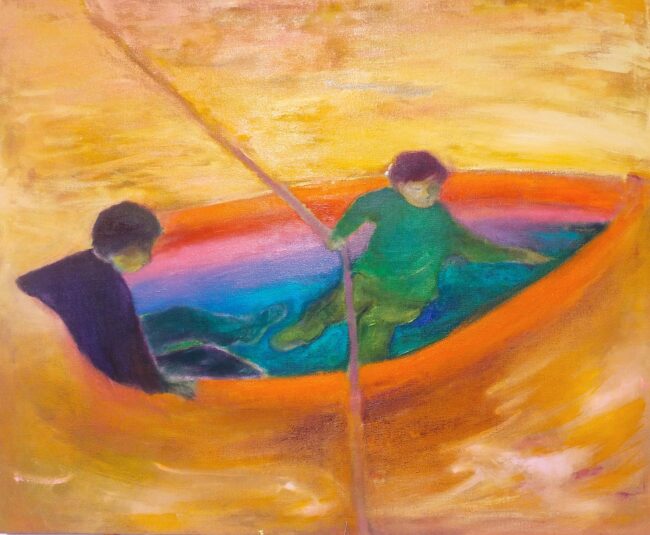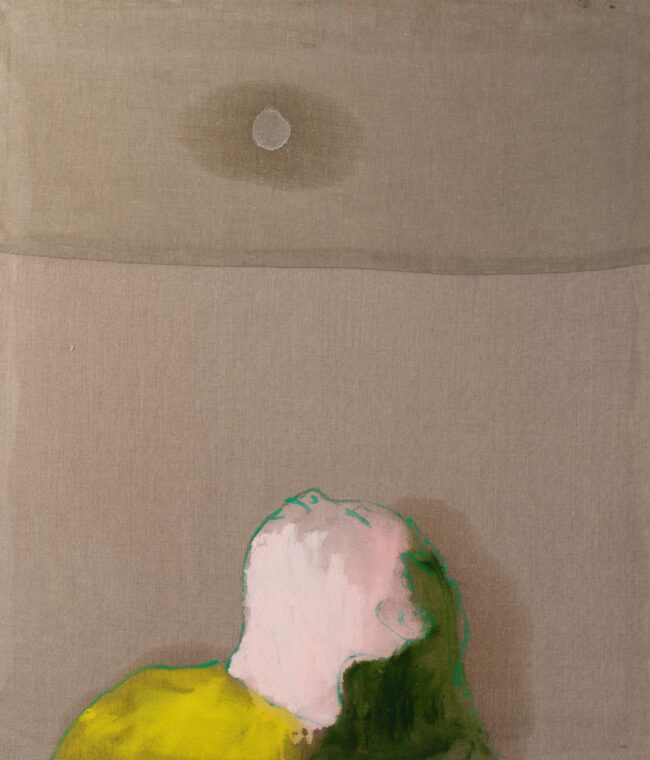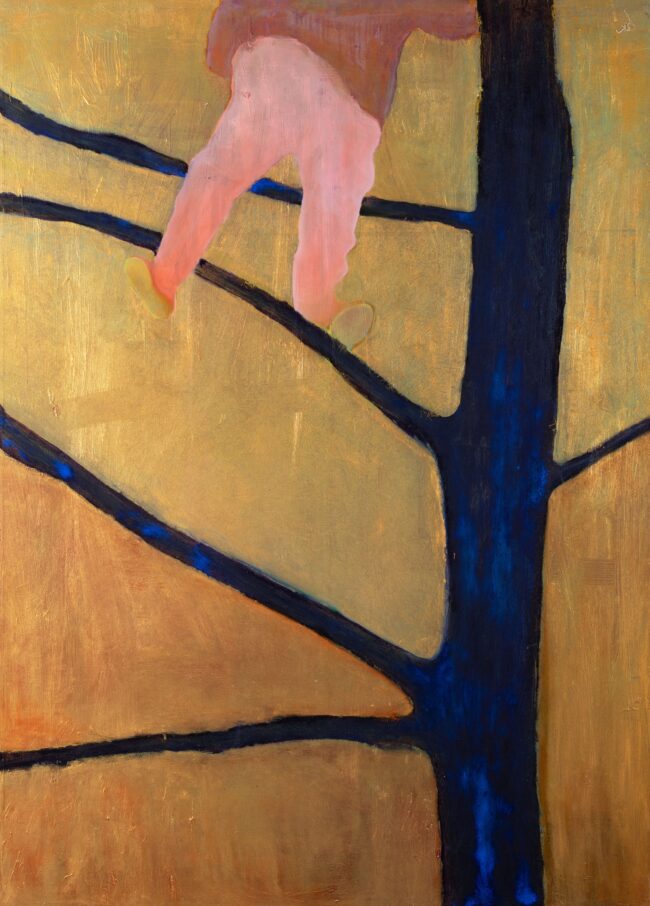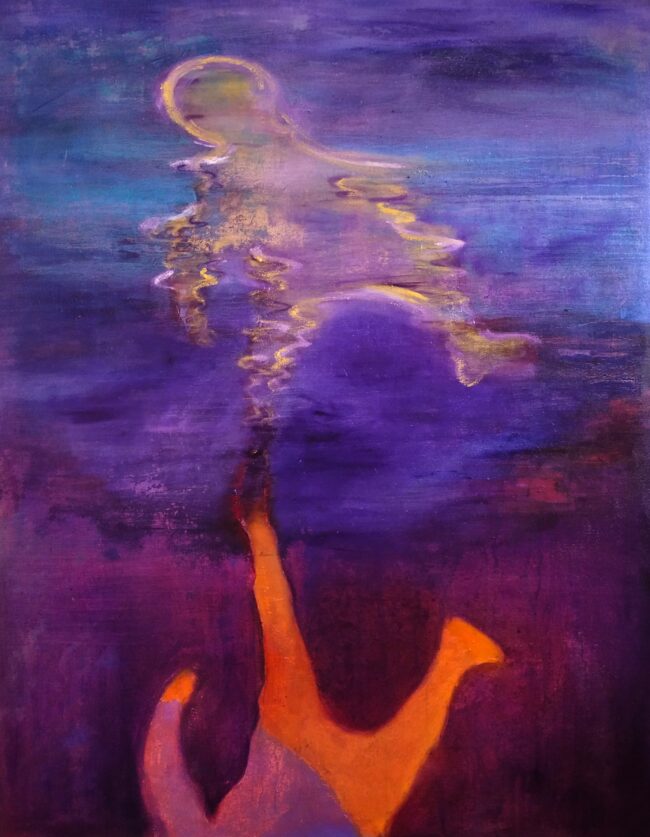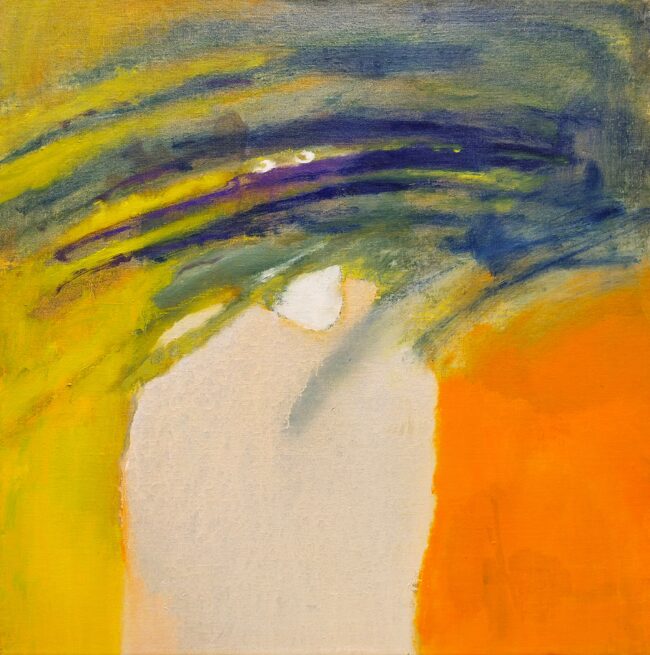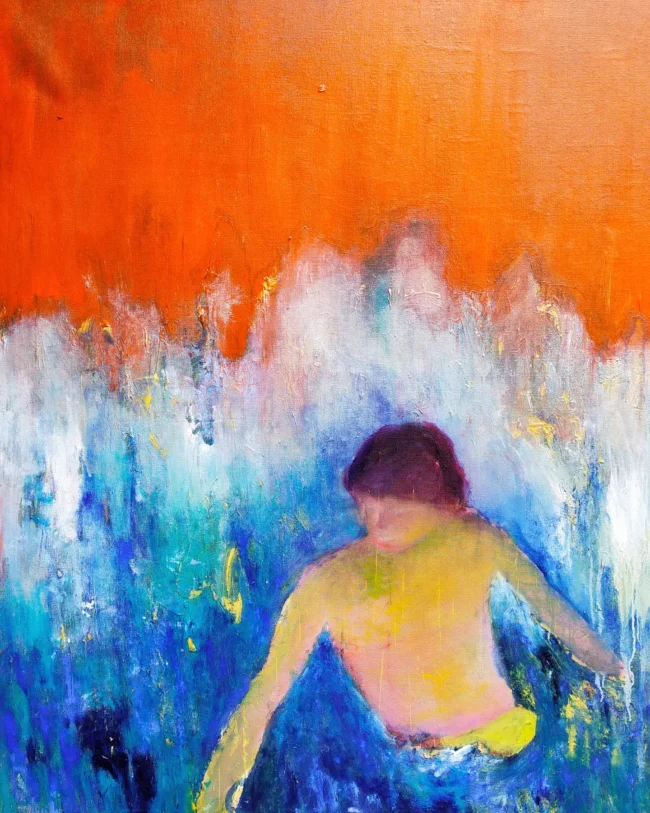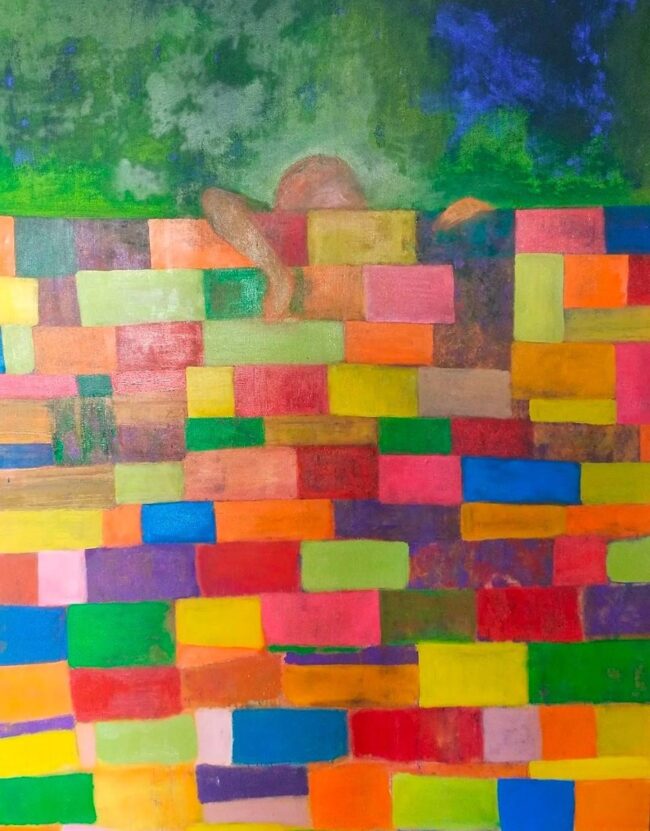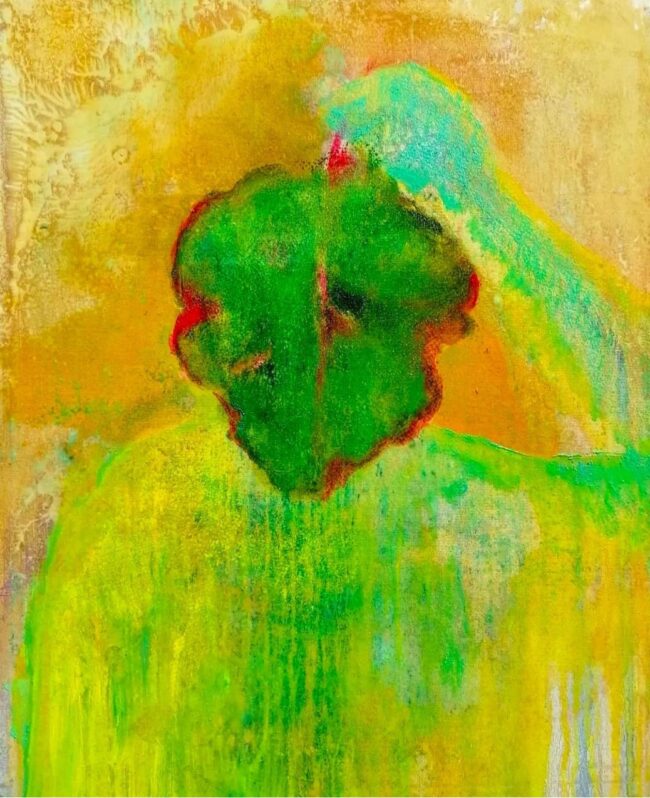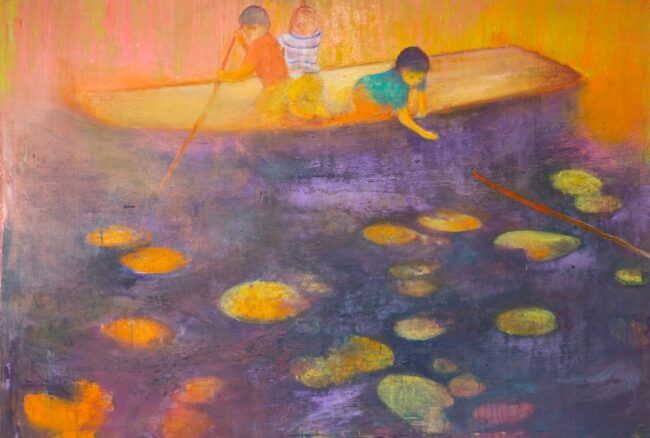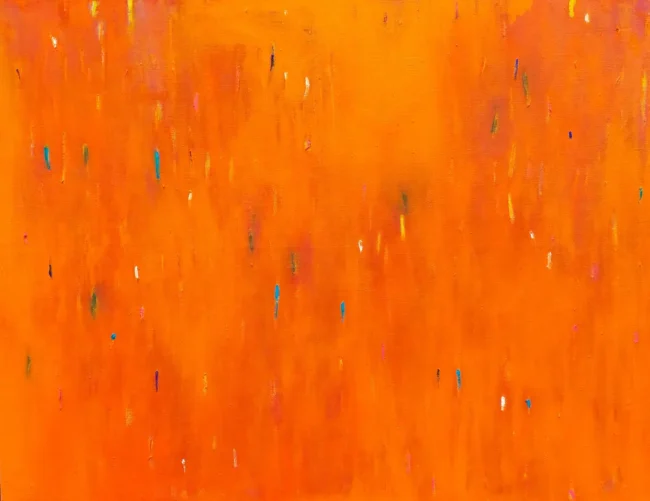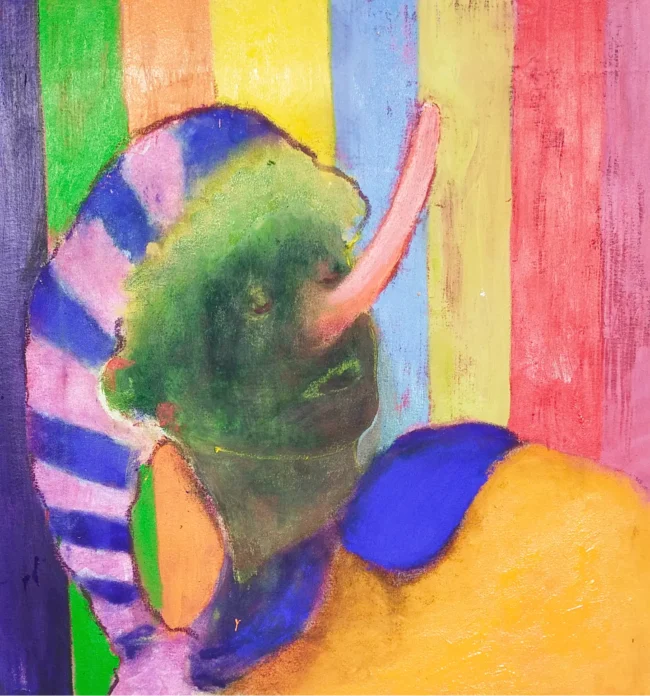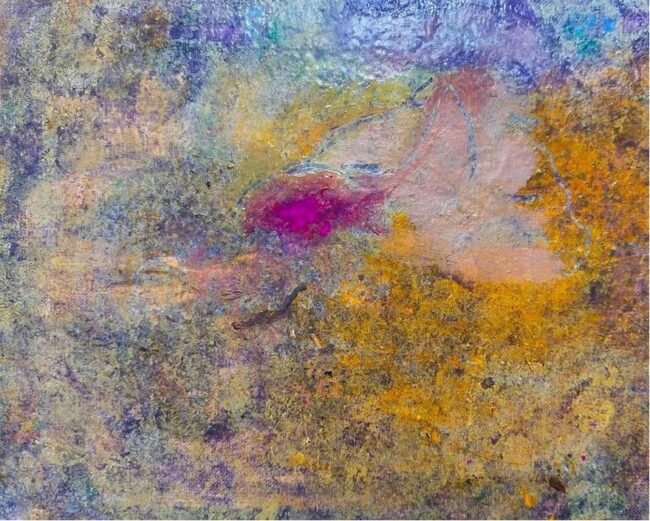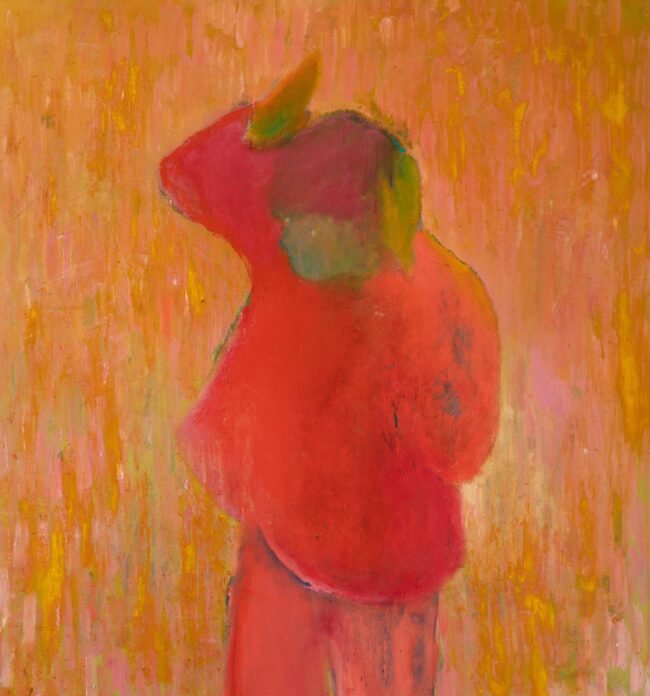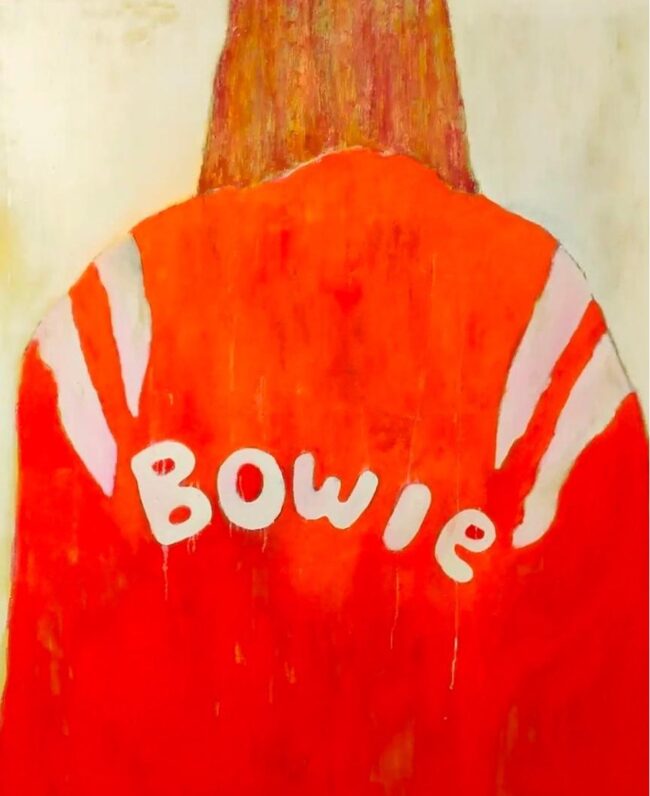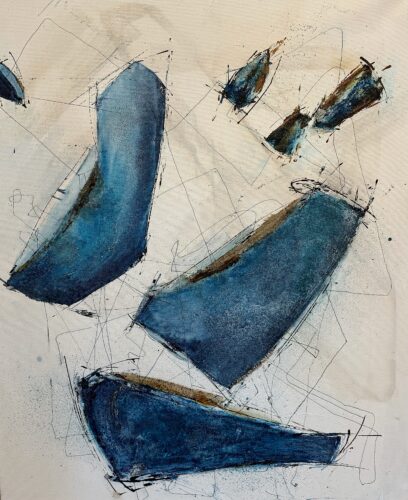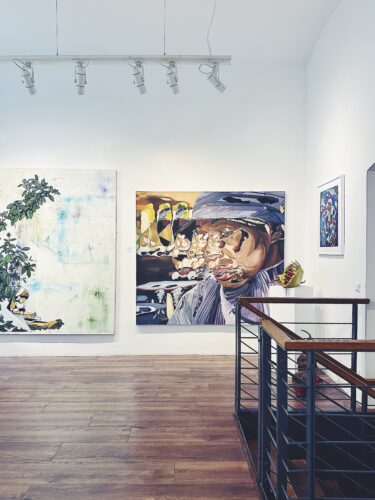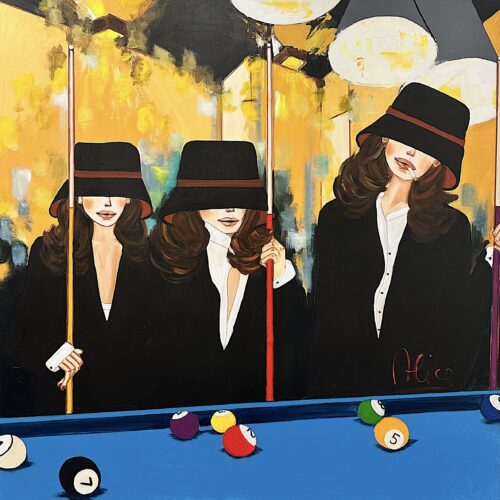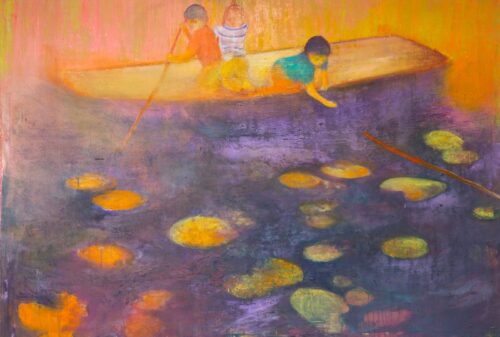Born in 1984, Czech artist Jan Urant, who is currently based in Wiltshire (U.K.), pursued his studies in London, where after having received his Foundation Diploma in Art and Design in 2008 and his Bachelor‘s degree in photography in 2011 from the London College of Communication, he also obtained his Master of Art theory degree from the Chelsea College of Art and Design in 2012.
In 2015 he was shortlisted for the ESSL ART AWARD CEE.
Creating his paintings through a long process of painting, washing off, scraping off and applying dry pigments, Urant‘s dreamy pictorial images with multiple layers of colors and narratives, depict a complex inner world, somewhere beyond the restricions of time, space and memory, the viewers find themselves magically enticed by and downright drawn into, following the pigments, retracing their dissolving and sedimenting on the border of materiality, reflecting the transience of individual human existence.
Urant dedicates a significant amount of time and reflection to the titles of his paintings and mostly finds them in the lyrics of the songs he‘s listening to while working, a certain symbol or metaphore (, as was the case with his work “Gap in the Clouds“, for instance).
Expanding the idea of music as a visual reference (like Henri Matisse famously did in his “La Danse“ (1909)), transferring it, its transmission into images, came to the artist not only thinking of Matisse, but rather while listening to music himself, resulting in his painting “Dabke“ (a traditional Libanese dance).
“For me painting is a kind of alchemy!“
This statement of Jan Urant – his credo, if you will – may not be immediately apparent in all its implications.
In her essay “Blossom – the alchemical albedo” (written on the occasion of Urant’s solo exhibition of the same name in Prague earlier this year), the psychologist and Jungian psychotherapist Patrycja Jackson sketches an extremely interesting line of argument in this regard:
Our visual development happens in the initial few weeks of life, implying that one of the very first connections to the world in human perception and learning, is happening
through seeing colours (black, white and red) and medieval alchemists knew about this fundamental organisation, and of its importance.
Classically, the multi-layered meaning of the alchemical work consisted of
the four coloured stages (often paired with the 7 alchemical processes, namely: calcination,
dissolution, separation, conjunction, fermentation, distillation, and coagulation).
The four colour oriented stages being:
- Nigredo (or “blackening” – representative of putrefaction, decomposition and the
cooking/cleansing of the “lead” into a uniform black matter. Symbolic of the death of
old ways of being),
- Albedo (or “whitening” – representative of purification of the black matter of
Nigredo. Symbolic of the process of rebirth and Soul consciousness),
- Citrinitas (or “yellowing” – this stage is the nearest before perfection. Symbolic of the
development of Spirit consciousness),
- Rubedo (or “reddening” – completion of Lapis Philosophorum. Symbolic of the
attainment of spiritual liberation).
The Swiss psychiatrist and a father of analytical psychology, Carl Gustav Jung, who was
fascinated by the work of medieval alchemists and studied their texts closely, suggested (in his book
“Psychology and Alchemy”) that the alchemical colour symbolism corresponded with stages of psychological maturation, noticing that the four alchemical stages underwent a transformation within the western psyche, which implied a major restructure of collective psychic contents.
In Jungian terms, the three stages (one, two and four) could be seen as symbolic expressions of the
stages of individuation – the process of becoming whole, by which we move towards the integration of the opposites, their transcendence, and the growth of consciousness.
While Nigredo can be seen as a dying of old habits, attitudes and patterns, psychologically Albedo, which is compared to a daybreak, and the preparation for the
next and final stage (the sunrise), represents the stage of shadow integration that gives space to a new creative process, a reflective state of consciousness.
